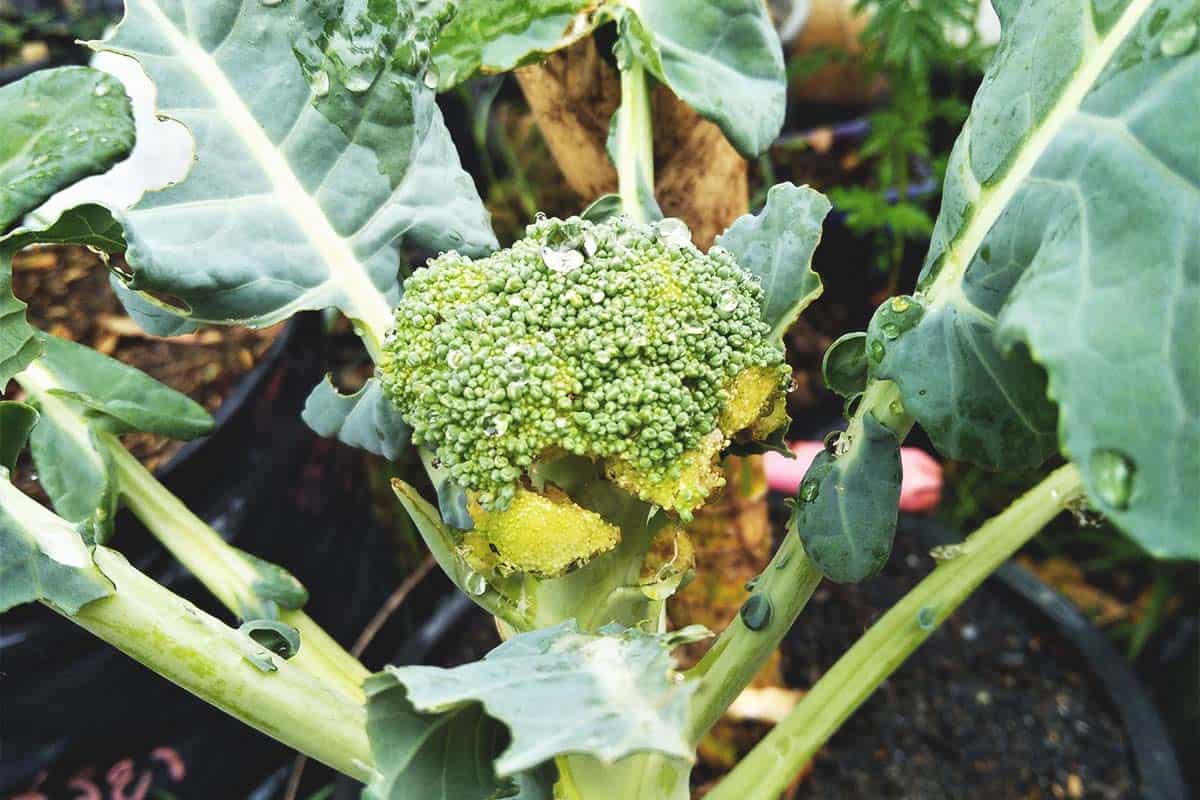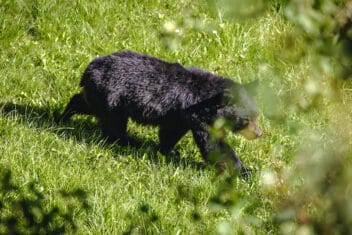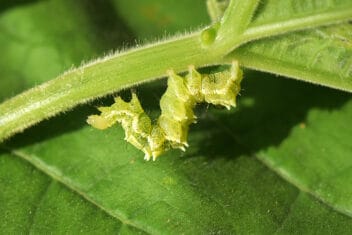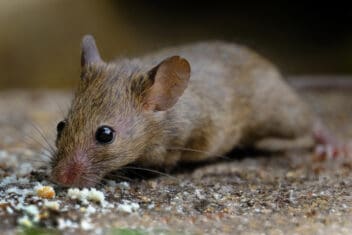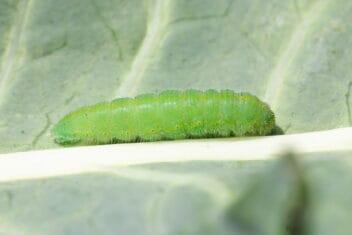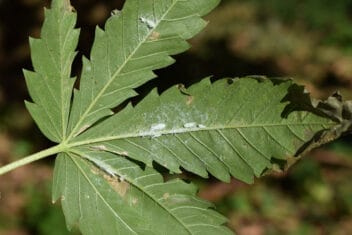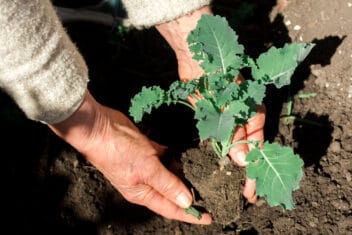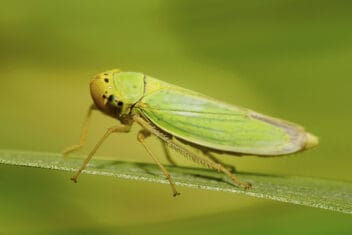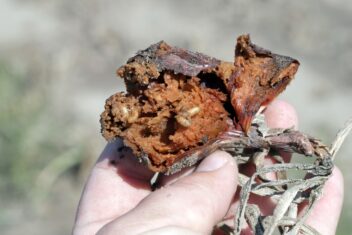When you spend hours watering, weeding, planting, fertilizing, pruning, and otherwise toiling over your organic vegetable garden, it can be incredibly frustrating to have a completely inedible crop.
While broccoli worms don’t necessarily render your broccoli inedible, they make it unappetizing, to say the least. These pests are not only unpleasant to find crawling around on your dinner plate, but they eat so voraciously that they have the potential to wipe out your entire crop.
If you’re sick of dealing with broccoli worms in your garden, rest assured – there are several easy ways you can get rid of these pests for good.

What Are Broccoli Worms?
Before I can tell you how to prevent and treat broccoli worms in your garden, I need to first tell you what these pests actually are.
Although broccoli is the most common plant to be affected by broccoli worms, other related plants – like cabbage, cauliflower, kale, and Brussels sprouts – can be impacted. These pests typically chew on the undersides of plants, gnawing holes and eating the entire plant from the bottom up.
There are technically three types of broccoli worms: cabbage worms, cabbage loopers, and diamondback worms.
Cabbage worms are the most common, a pale velvety-green in color. These pests are technically caterpillars, the larvae of white butterflies. Cabbage loopers, on the other hand, are the larvae of brown moths. They are also smooth and green, but a bit lighter in color than cabbage worms.
Diamondback worms are the least common pest that you might see on your broccoli plants. These are the larvae of gray moths and, as the name implies, they have a diamond shape imprinted on their backs.
While there are some differences in the anatomy and behavior of these pests, they all, for the most part, behave in the exact same way. Since they are all a light green color, they blend in easily with your plants. Once they’re present, they can completely defoliate your plants and ruin your hard work.
Think you might have a broccoli worm infestation? The most common sign is many large, irregular holes chewed into the foliage. You might also notice that the growth of your plant is stunted. Sometimes, there is even a greenish-brown excrement left behind on the heads.
The Life Cycle of a Broccoli Worm

Knowing the life cycle of a broccoli worm can be incredibly helpful as you work toward controlling these pests in your garden.
A broccoli worm is typically about 1¼ inch long and a velvety green in color. It has many fine hairs and is usually noticed in the spring to late fall. Adult females typically emerge in the early spring, hatching as green pupae after overwintering in your soil or garden debris. Adults appear as pale yellow or white butterflies with black spots.
These butterflies lay up to 200 small yellow eggs on plants, typically on the bellies of the leaves. These hatch in about a week, turning into young caterpillars – or worms. They feed for about 15 days and then pupate into butterflies. There can be three to five generations of these pests each year – up to eight in warmer climates. This means there is some serious potential for these pests to wreak havoc on your garden!
Do Broccoli Worms Affect Other Types of Plants Besides Broccoli?
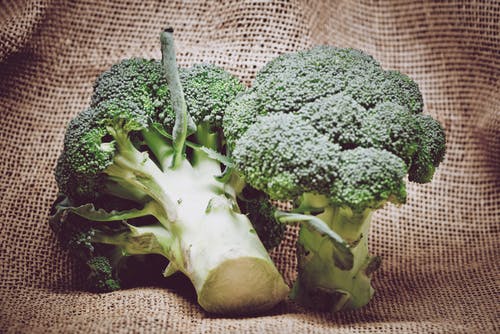
Unfortunately, you can’t prevent broccoli worms by simply not planting broccoli in your garden anymore. Broccoli worms feed on other plants, too, including:
- Kale
- Cauliflower
- Cabbage
- Brussels Sprouts
- Collards
- Mustards
If you notice worms on other plants, like carrots, dill, fennel, parsley, or anise, it might be another caterpillar species – such as the Anise Swallowtail – wreaking havoc.
How to Remove Broccoli Worms
Luckily, getting rid of broccoli worms isn’t challenging – you just need to select one of these solutions.
1. Bt Spray
One of the best ways to control broccoli worms is to apply a Bacillus thuringiensis (Bt) spray. It’s a natural treatment that consists of a bacterium that makes the worms extremely sick – eventually killing them off.
It’s perfectly safe for other plants, humans, and insects – it just affects the worms. You can find this spray at most garden centers. It should be used in the afternoon at the ratio of 1 teaspoon of liquid detergent per gallon of Bt.
2. Herbal Insecticides
There are plenty of herbal remedies out there to help you get rid of broccoli worms, too. One involves soaking garlic cloves for a few days in cold water. Then, you can blend it up and apply it directly to your plants.
Garlic is a powerful natural insecticide and parasiticide, so it’s definitely worth a try if you don’t want to resort to chemical treatments! You can also try adding things like hot peppers or wormwood to your spray. A good blast of hot, soapy water can often do the trick, too.
3. Clean After Harvesting
If you don’t want to deal with broccoli worms while your plants are still outside, you can always deal with the pests after the harvest.
You probably already do a good job of cleaning your produce after you’ve brought it inside, but broccoli worms are tough little buggers. Unfortunately, your regular methods of cleaning your produce probably aren’t going to cut it. You need to get more hands-on.
To draw broccoli worms out, you will need to soak the heads of broccoli in a pot of warm water with 2 Tbsp and ¼ cup of table salt added in. Keep the heads submerged for at least half an hour. Rinse the heads thoroughly afterward to remove any salty or vinegary residue.
Cooking your broccoli before eating it can also help remove the worms. This is admittedly not the most appetizing way to rid your heads of the pests, but it will nonetheless get the job done. When you heat up broccoli, any worms inside will turn a nasty pale color and wiggle out of the heads. If they don’t crawl out, they will die inside – you will just need to remove them before eating.
How to Prevent Broccoli Worms
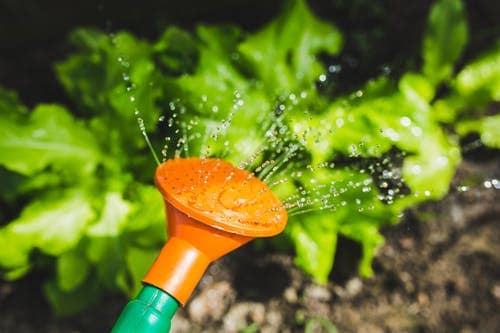
1. Use Row Covers
One of the easiest and most organic ways to prevent broccoli worms from becoming a problem is to use row covers. Row covers provide protection from a variety of common broccoli pests, particularly during the high-infestation months of summer and spring.
If you don’t want to go through the effort of putting out DIY row covers, a good (and quick) alternative is to place the entire head of the plant in pantyhose or nylon stockings.
2. Hand Picking
If you see broccoli worms on your plants, handpick them and drown them in a bucket of soapy water immediately. Or you can feed them to your chickens!
3. Water and Fertilize Plants Regularly
Plants are more likely to fall victim to insects, diseases, and other problems when they are weakened by a lack of water or nutrients. Following a good watering and fertilizing regimen can help prevent broccoli worms as well as other pests like aphids, flea beetles, slugs, and mites, too.
A healthy crop is naturally more pest resistant. Before planting broccoli, make sure your garden is rich in nitrogen and has adequate drainage. This will ensure a more successful, pest-free harvest later on.
4. Rotate Your Crop
Crop rotation is one of the most effective ways to keep broccoli worms at bay. Remove crop debris after harvest and pull up weeds three weeks before planting, too. This will remove potential spots where the pests could have overwintered.
5. Try Companion Plants
Another easy way to prevent broccoli worms – and to ensure the health of your garden – is to plant companion plants. Strongly-scented flowers, like chamomile, as well as other herbs like sage and dill can keep cabbage butterflies (and their worms!) away. Some people even plant certain species to attract creatures that eat broccoli worms, like frogs, toads, and birds.
6. Add Some Predatory Wasps
There are plenty of beneficial insects that can help keep broccoli worms at bay, but one of the most common ways to prevent these pests from damaging your plants is to introduce predatory wasps. These wasps lay eggs on the larvae of cabbage butterflies. When they hatch, the adult wasps burrow into the caterpillars and eat them.
Gross and violent, but effective! To invite predatory wasps into your garden, simply plant some fennel or dill (the favorites of predatory wasps) near any plants that have the potential to be affected.
Are Broccoli Worms Harmful to People?
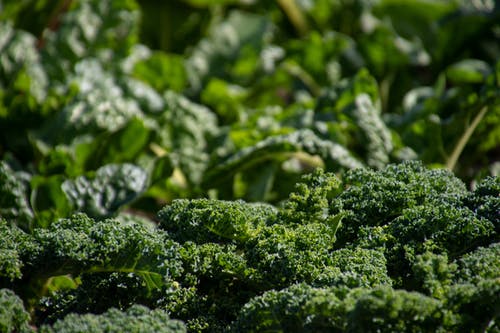
If you’re panicking because you just found a wiggly green worm crawling out of your otherwise-scrumptious head of broccoli, rest assured – broccoli worms aren’t harmful to people. They’re just gross.
Broccoli worms hold on tight, so you might notice these pests crawling out of even pesticide-controlled, supermarket-sold produce. However, if you accidentally eat one, don’t worry. You aren’t going to get sick and die. It just might make your stomach turn a little when you realize it!
That said, controlling and preventing broccoli worms is definitely preferable to finding one on your dinner plate, or worse, half of one. Follow these tips, and you won’t have to worry about experiencing such an unpleasant sight!
